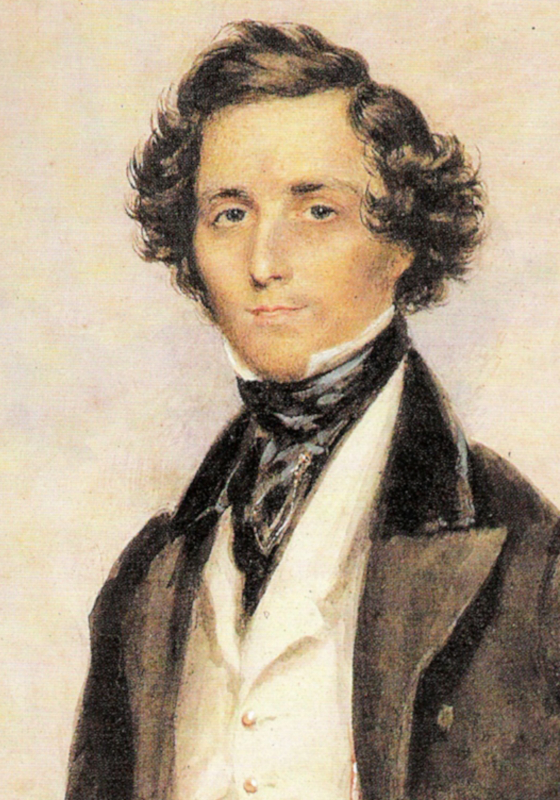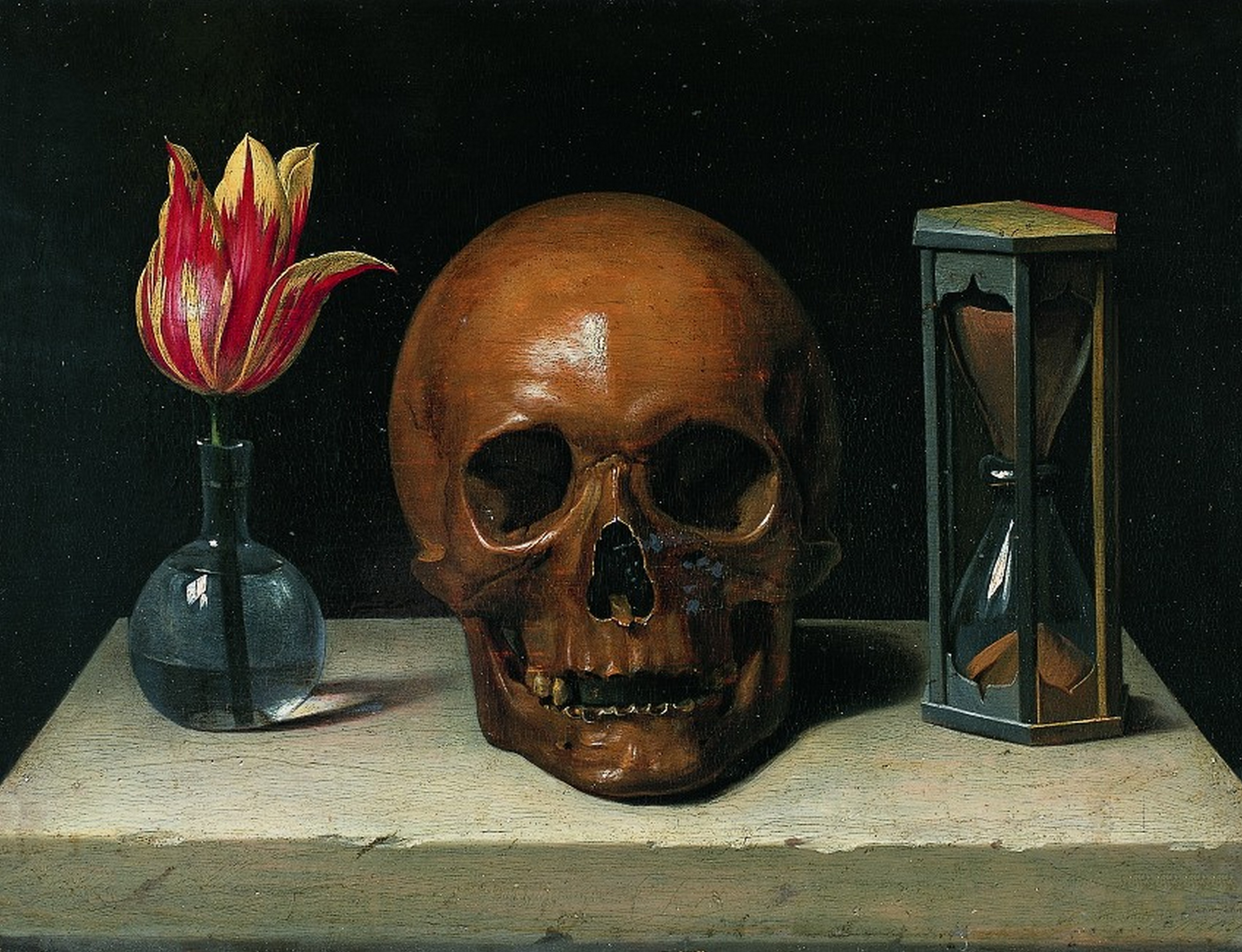important stories in Christmas
1.The Nutcracker and the Mouse King
2.a Christmas carol
3.The Gift of Magi
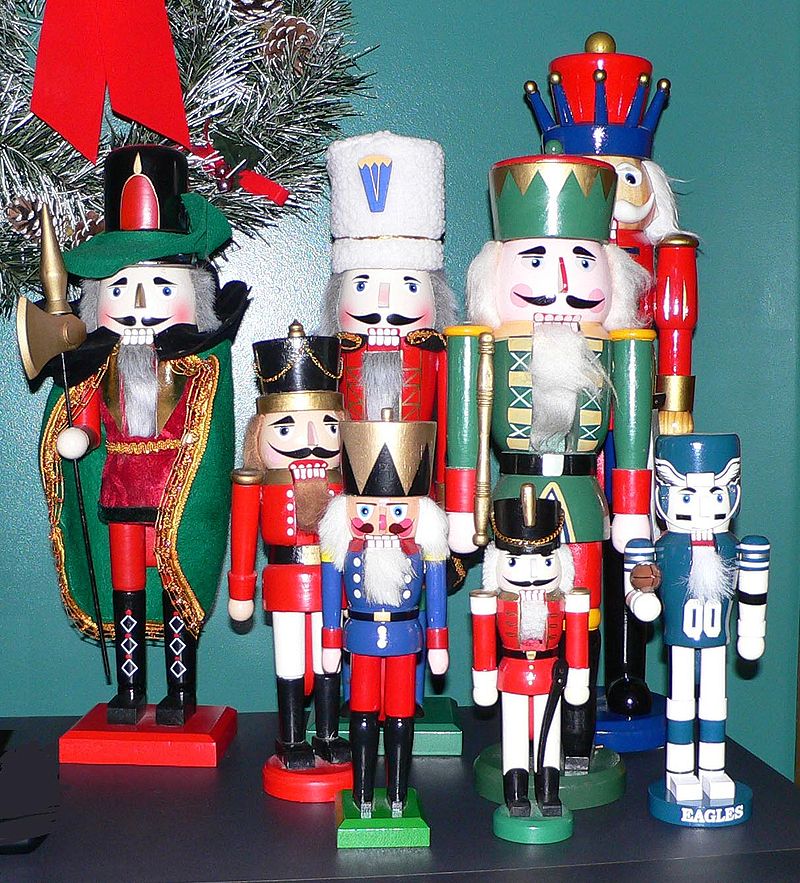
"
The Nutcracker and the Mouse King" :"The Nutcracker and the Mouse King" is a story written in 1816 by
German author E. T. A. Hoffmann, in which young Marie Stahlbaum's favorite Christmas toy, the Nutcracker, comes alive and, after defeating the evil Mouse King in battle, whisks her away to a magical kingdom populated by dolls. In 1892, the Russian composer
Pyotr Ilyich Tchaikovsky and choreographers Marius Petipa and Lev Ivanov turned Alexandre Dumas père's adaptation of the story into
the ballet The Nutcracker, which became one of Tchaikovsky's most famous compositions, and perhaps the most popular ballet in the world.
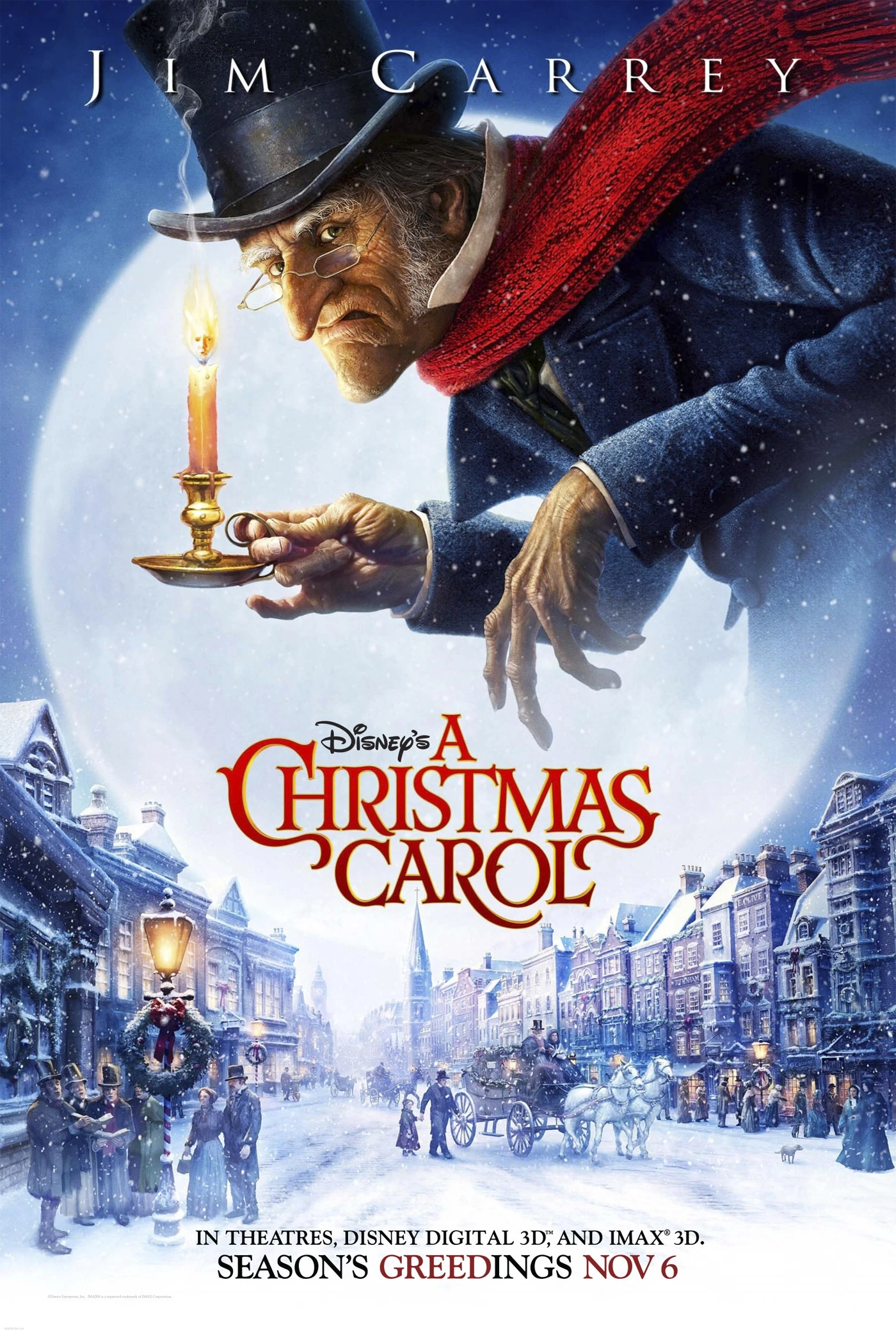 A Christmas Carol
A Christmas Carol:A Christmas Carol in Prose, Being a Ghost-Story of Christmas, commonly known as A Christmas Carol, is a novella by
Charles Dickens, first published in London by Chapman & Hall on 19 December 1843. The
novella met with instant success and critical acclaim. A Christmas Carol tells the story of a bitter old miser named
Ebenezer Scrooge and his
transformation into a gentler, kindlier man after visitations by the ghost of his former business partner Jacob Marley and the Ghosts of Christmas Past, Present and Yet to Come.
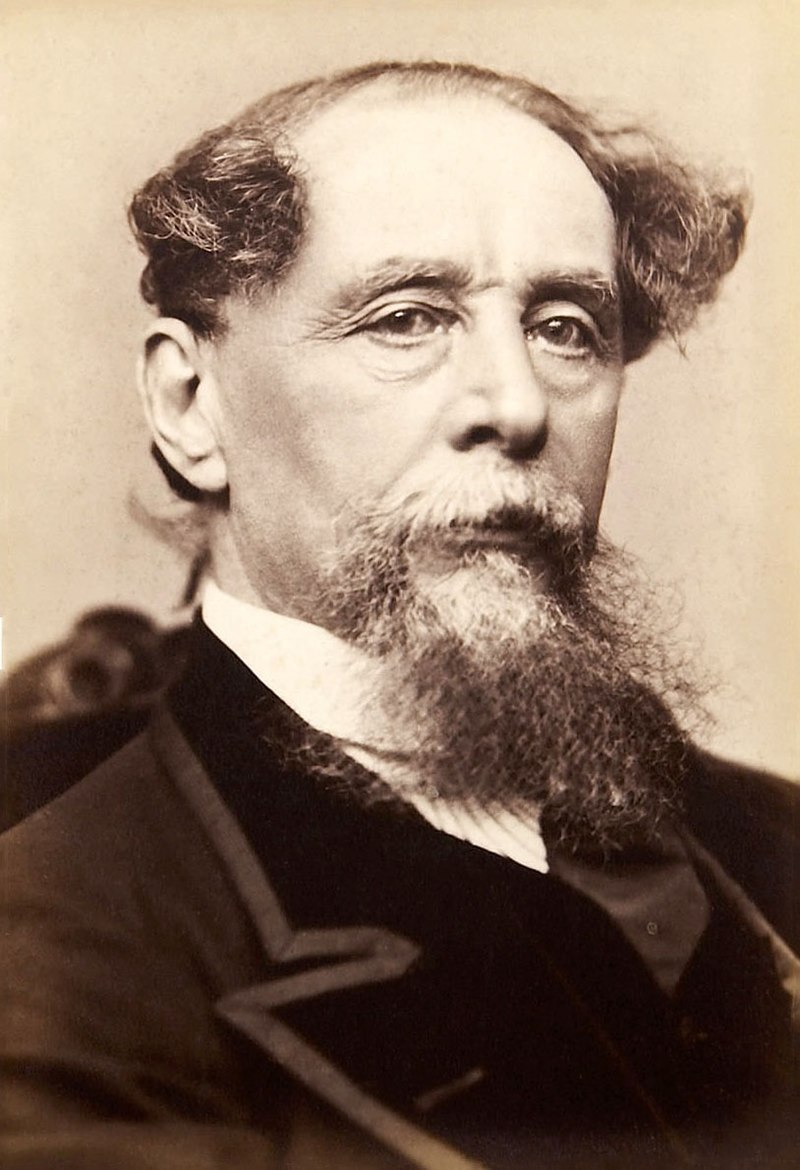 Charles Dickens
Charles Dickens: Charles John Huffam Dickens was an
English writer and social critic. He created some of the world's best-known fictional characters and is regarded as the greatest novelist of the Victorian era. His works enjoyed
unprecedented popularity during his lifetime, and by the twentieth century critics and scholars had recognised him as
a literary genius. His novels and short stories enjoy lasting popularity.
Novella:A novella is a work of written, fictional, narrative prose normally l
onger than a short story but shorter than a novel. The English word "novella" derives from the Italian novella, feminine of novello, which means "new". The novella is a common literary genre in several European languages. For example,
The Decameron is a novella.

"
The Gift of the Magi":"The Gift of the Magi" is a short story, written by O. Henry (a pen name for William Sydney Porter), about a young married couple and how they deal with the challenge of buying secret Christmas gifts for each other with very little money. As a sentimental story with a moral lesson about
gift-giving, it has been a popular one for adaptation, especially for presentation at
Christmas time. The plot and its "twist ending" are well-known, and the ending is generally considered an example of comic irony. It was allegedly written at Pete's Tavern on Irving Place in New York City.
 O. Henry
O. Henry:William Sydney Porter, known by his pen name O. Henry, was an American short story writer. His stories are known for their surprise endings.
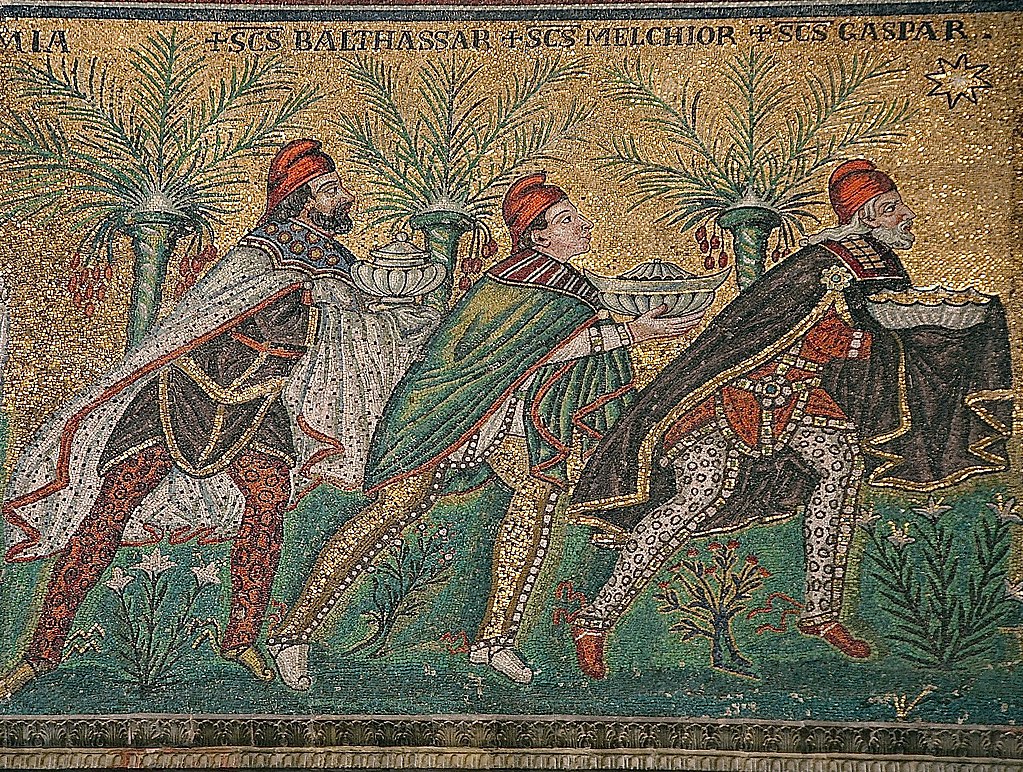 The Magi
The Magi:The Magi, also referred to as
the (Three) Wise Men or
(Three) Kings, were, in the
Gospel of Matthew and
Christian tradition, a group of
distinguished foreigners who visited Jesus after his birth,
bearing gifts of gold, frankincense and myrrh. They are regular figures in traditional accounts of the nativity celebrations of Christmas and are an important part of Christian tradition.
The Decameron:The Decameron, subtitled Prince Galehaut, is a
collection of novellas by the 14th-century Italian author
Giovanni Boccaccio (1313–1375). The book is structured as a
frame story containing
100 tales told by a group of seven young women and three young men sheltering in a secluded villa just outside Florence to
escape the Black Death, which was afflicting the city. Boccaccio probably conceived the Decameron after the epidemic of 1348, and completed it by 1353. The
various tales of love in The Decameron range from the erotic to the tragic. Tales of wit, practical jokes, and life lessons contribute to the
mosaic. In addition to its literary value and widespread influence (for example on
Chaucer's
The Canterbury Tales), it provides a document of life at the time. Written in
the vernacular of the Florentine language, it is considered a masterpiece of classical early Italian prose.
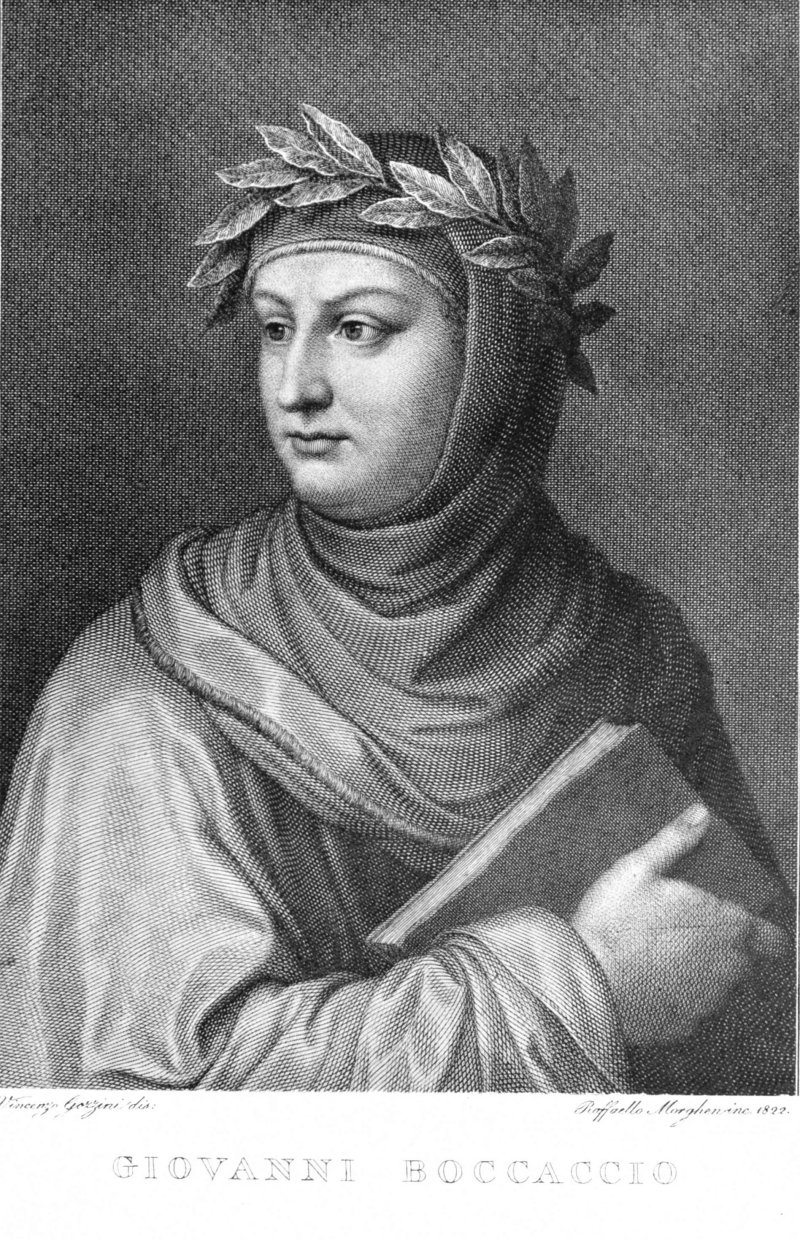 Giovanni Boccaccio
Giovanni Boccaccio:Giovanni Boccaccio was an
Italian writer, poet, correspondent of Petrarch, and an important Renaissance humanist. Boccaccio wrote a number of notable works, including The
Decameron and
On Famous Women. He wrote his
imaginative literature mostly in the
Italian vernacular, as well as other works in
Latin, and is particularly noted for his realistic dialogue which differed from that of his contemporaries, medieval writers who usually followed formulaic models for character and plot.
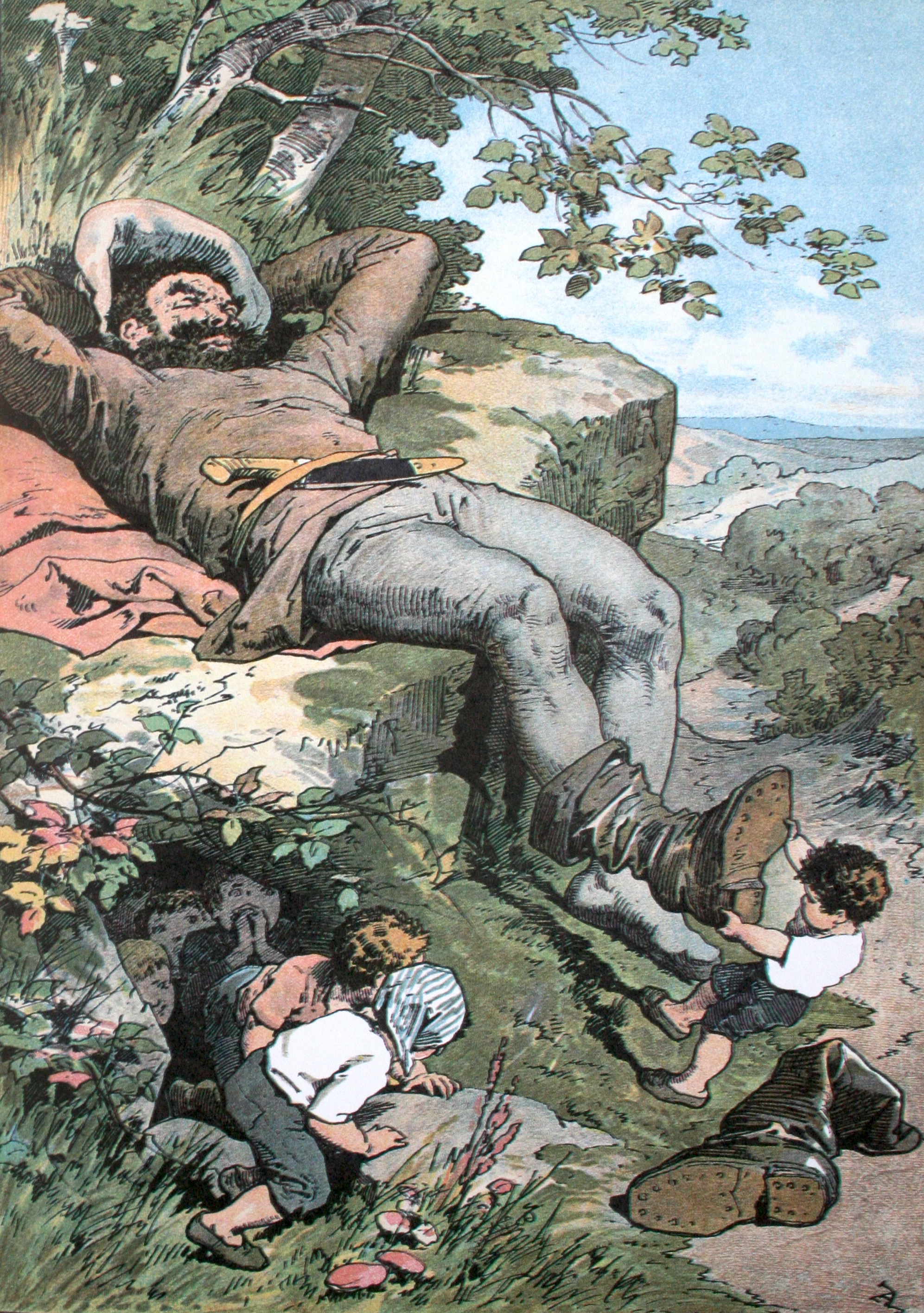
Fairy tale:A fairy tale is a type of short story that typically features
folkloric fantasy characters, such as dwarves, elves, fairies, giants, gnomes, goblins, mermaids, trolls, unicorns, or witches, and usually
magic or enchantments. Fairy tales may be distinguished from other folk narratives such as legends (which generally involve belief in the veracity of the events described) and explicitly moral tales, including beast fables. The term is mainly used for stories with origins in European tradition and, at least in recent centuries, mostly relates to children's literature.
 龜兔賽跑:The Tortoise and the Hare
龜兔賽跑:The Tortoise and the Hare
"The Tortoise and the Hare" is one of Aesop's Fables and is numbered 226 in the Perry Index. The account of a race between unequal partners has attracted conflicting interpretations. It is itself a variant of a common folktale theme in which ingenuity and trickery (rather than doggedness) are employed to overcome a stronger opponent.
※the difference between
hare(野兔) and
rabbit(飼兔)

- Hares are generally larger and faster than rabbits.
- Hares have longer ears and larger feet than rabbits.
- Hares have black markings on their fur.
- Rabbits are altricial i.e. their young are born blind and hairless. In contrast, hares are generally born with hair and are able to see (precocial). Young hares are therefore able to fend for themselves very quickly after birth.
- magnify
- Hares have very long and strong hind legs, more so than rabbits.
- Hunters say that hare has a much stronger, gamier flavor than rabbit (which actually does taste like a milder version of chicken).
 march hare
march hare:"
Mad as a March hare" is a common British English phrase, both now and in Carroll's time, and appears in John Heywood's collection of proverbs published in 1546. It is reported in
The Annotated Alice by Martin Gardner that this proverb is based on popular belief about hares' behaviour at the beginning of the long breeding season, which lasts from February to September in Britain.

The Brothers Grimm: Jacob (1785–1863) and Wilhelm Grimm (1786–1859), were
German academics, philologists, cultural researchers,
lexicographers(編字典的人) and authors who together specialized in
collecting and publishing
folklore during the 19th century. They were among the best-known storytellers of folk tales, and popularized stories such as "Cinderella" ("Aschenputtel"), "The Frog Prince" ("Der Froschkönig"), "The Goose-Girl" ("Die Gänsemagd"), "Hansel and Gretel" ("Hänsel und Gretel"), "Rapunzel", "Rumpelstiltskin" ("Rumpelstilzchen"),"Sleeping Beauty" ("Dornröschen"), and "Snow White" ("Schneewittchen"). Their first collection of folk tales,
Children's and Household Tales, was published in
1812.

"
Rapunzel": "Rapunzel" is a
German fairy tale in the collection assembled by the Brothers Grimm. The Grimm Brothers' story is an
adaptation of the fairy tale Rapunzel by Friedrich Schulz published in 1790. Its plot has been used and parodied in various media and its best known line ("
Rapunzel, Rapunzel, let down your hair") is an idiom of popular culture.
 A phallus
A phallus:A phallus is a penis, especially when erect, an object that
resembles a penis, or a
mimetic image of an erect penis.
Any object that
symbolically—or, more precisely,
iconically—resembles a penis may also be referred to as a phallus; however, such objects are more often referred to as being phallic (as in "
phallic symbol"). Such symbols often represent fertility and cultural implications that are associated with the male sexual organ, as well as the male orgasm.

Danaë : In Greek mythology, Danaë was the daughter, and only child of King Acrisius of Argos and his wife Queen Eurydice. She was the mother of the hero
Perseus by Zeus. She was credited with founding the city of Ardea in Latium during the Bronze Age.

The Pied Piper of Hamelin :The Pied Piper of Hamelin is the subject character of a legend from the town of Hamelin (Hameln), Lower Saxony, Germany. The legend dates back to
the Middle Ages, the earliest references describing a piper, dressed in multicolored ("pied") clothing, who was a
rat-catcher hired by the town to lure rats away with his magic pipe. When the citizens
refuse to pay for this service, he retaliates by using his instrument's magical power on
their children, leading them away as he had the rats. This version of the story spread as folklore and has appeared in the writings of Johann Wolfgang von Goethe, the Brothers Grimm, and Robert Browning, among others.
 The Nibelungenlied
The Nibelungenlied: The Nibelungenlied, translated as
The Song of the Nibelungs, is an
epic poem in
Middle High German. The story tells of dragon-slayer Siegfried at the court of the Burgundians, how he was murdered, and of his wife Kriemhild's revenge.
 A femme fatale
A femme fatale:A femme fatale is a stock character of a
mysterious and seductive woman whose charms
ensnare her lovers, often leading them into
compromising, dangerous, and deadly situations.
The phrase is
French for "
fatal woman". A femme fatale tries to
achieve her hidden purpose by using
feminine wiles such as beauty, charm, and sexual allure. In some situations, she uses lies or coercion rather than charm. She may also make use of some subduing weapon such as sleeping gas, a modern analog of magical powers in older tales. She may also be (or imply that she is) a
victim, caught in a situation from which she cannot escape; The Lady from Shanghai (a 1947 film noir) is one such example.
One of the most common traits of the femme fatale include promiscuity and the "
rejection of motherhood," seen as "one of her most threatening qualities since by denying his immortality and his posterity it leads to the ultimate destruction of the male." Femmes fatale are typically villainous, or at least morally ambiguous, and always associated with a sense of mystification and unease.
Puberty:Puberty is the process of physical changes through which a child's body matures into an adult body capable of sexual reproduction.
ab-:負面
ex: abolish、abandon





